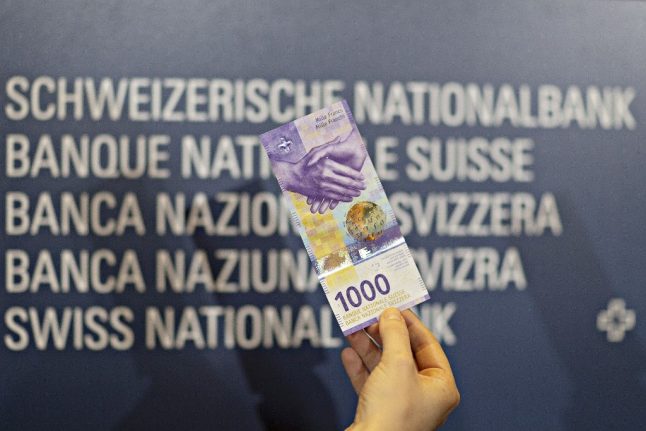The Swiss National Bank said in a statement that is was leaving its target rate for the three-month Libor — the borrowing rate paid by banks — unchanged between minus 1.25 and minus 0.25 percent.
The central bank said it would also intervene in foreign exchange markets “as necessary” to ease upward pressure on the franc, which is “still significantly overvalued, despite a slight depreciation”.
The euro edged up above 1.095 francs in Thursday morning trading on FX markets after the SNB announcement, but remained significantly below the 1.20 floor supported by the central bank for more than three years until January.
After flirting with parity against the euro the franc has backed off slightly but its relative strength still poses a challenge for Swiss companies exporting to customers in the euro zone.
The central bank noted that its policy of negative interest rates and its willingness to intervene in the foreign exchange market make investments in Swiss francs less attractive, thus reducing upward pressure on the currency.
The franc is seen as a safe haven currency that rises in value in times of uncertainty.
The SNB said the agreement of a new bailout programme for Greece has soothed concerns about that country’s debt crisis but concerns have recently emerged about developments in China, where stocks have fallen.
The SNB said it expected negative inflation in Switzerland for the next two years (minus 1.2 percent this year and 0.5 percent in 2016) before turning positive in 2017.
Against a background of moderate global economic growth, the central banks said it expects the Swiss economy to pick up in the second half of the year after stagnating for the first six months, supported by domestic demand.
“If the international environment continues to improve and the overvaluation of the Swiss franc eases, exports should once again make a greater contribution to economic growth”.
The SNB expects the economy to grow by about one percent in 2015.



 Please whitelist us to continue reading.
Please whitelist us to continue reading.
Member comments